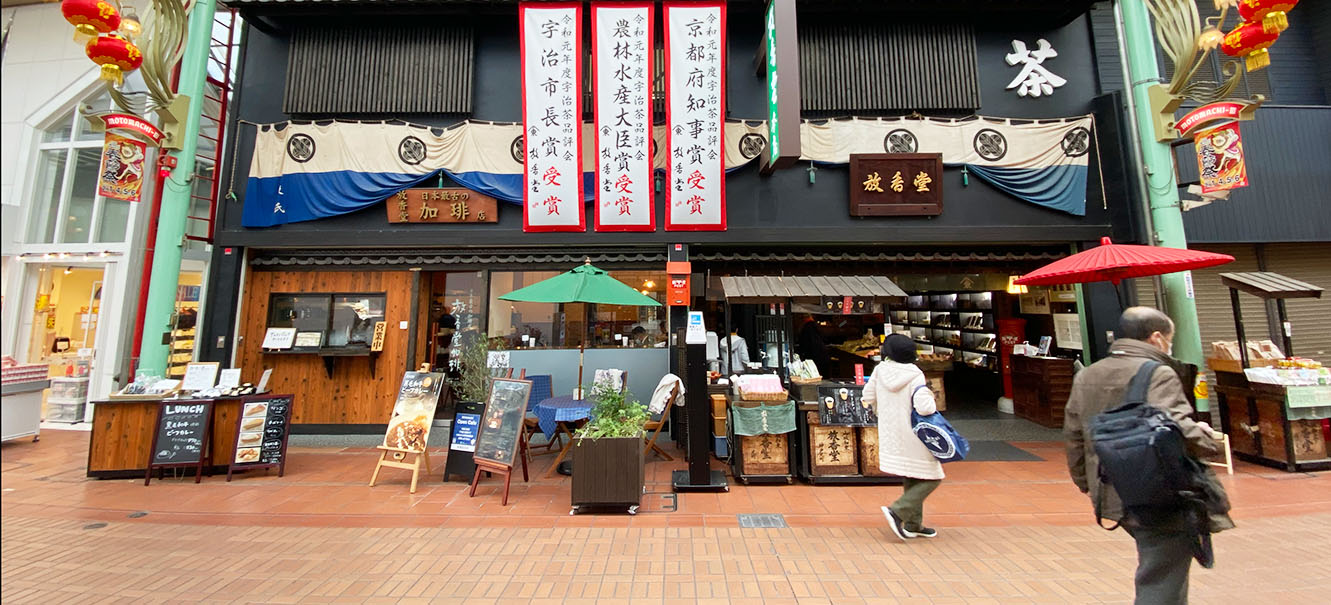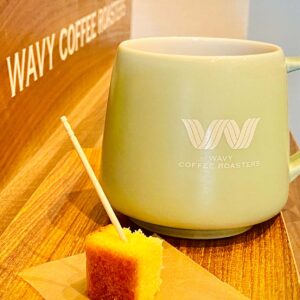Hokodo Coffee (放香堂加琲) in Kobe, Japan is Japan’s first and oldest coffee shop. Around 150 years ago, Japan finally opened up its borders to import and export; Kobe was one of the first two ports to open to the rest of the world. New goods came into Japan, and along with other goods, came coffee. In 1878, Hokodo, which was a tea shop at the time in Motomachi, Kobe, began selling coffee. Here, I learned why coffee in Japan is often dark roasted. Read on to find out.
Coffee in Japan is dark roast. With the rare exception of a modern 3rd wave coffee shop, you’re going to drink dark roast. It’s served in restaurants, sold in supermarkets, poured at cafes, dispensed at convenience stores, and even dispensed in paper cups and cans from vending machines. Even if somewhere it’s printed that it’s medium or anything else, it really still is a dark roast.
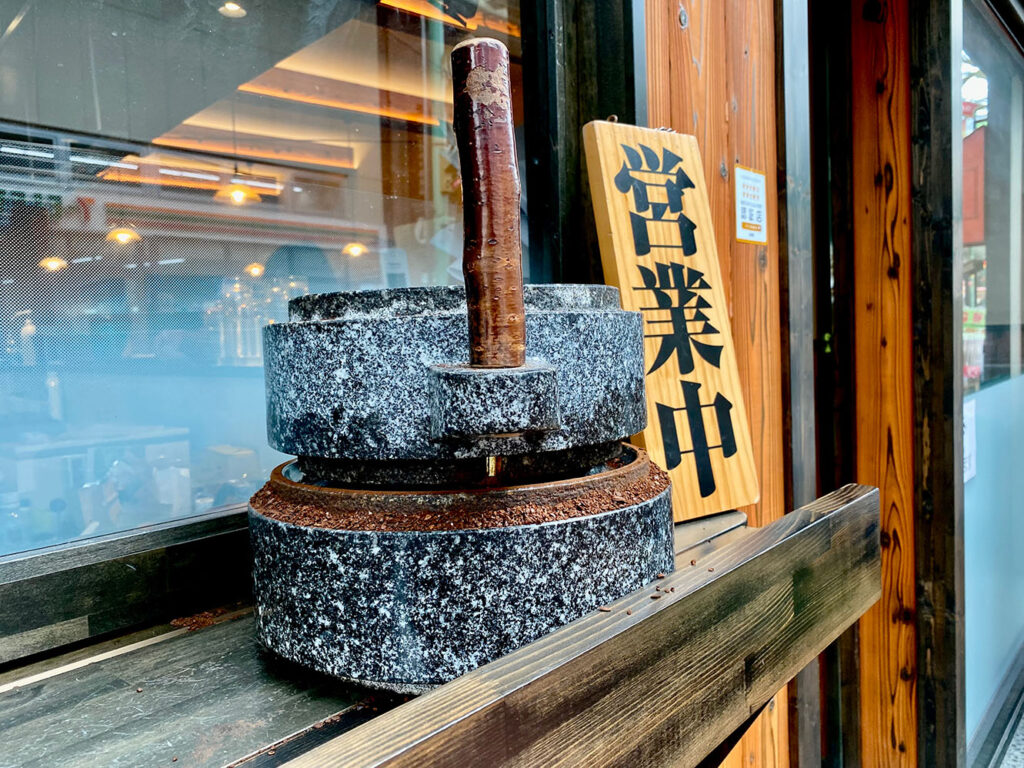
Japan loves dark roast. But why? When coffee was first imported to Japan, metal was hard to find, and coffee was often ground in stone mills. Coffee beans are difficult to grind when ground lightly, but become much easier to grind as the beans are roasted darker and darker. Because of these stone mills having a difficult time properly grinding medium and light roasted coffee, the default roast for these stone mills was dark roast. These stone mills created grinds of uneven fineness, with some powdery coffee grinds, and other larger bits. The cool stone mills used for grinding coffee also kept a very even temperature; the coffee is ground much slower than a faster spinning metal burr set. Combine all these factors, and you have the signature dark flavors of the coffee in Japan. This set the precedent as to what people expected coffee to taste like, and Japan does not fail to deliver what people expect.
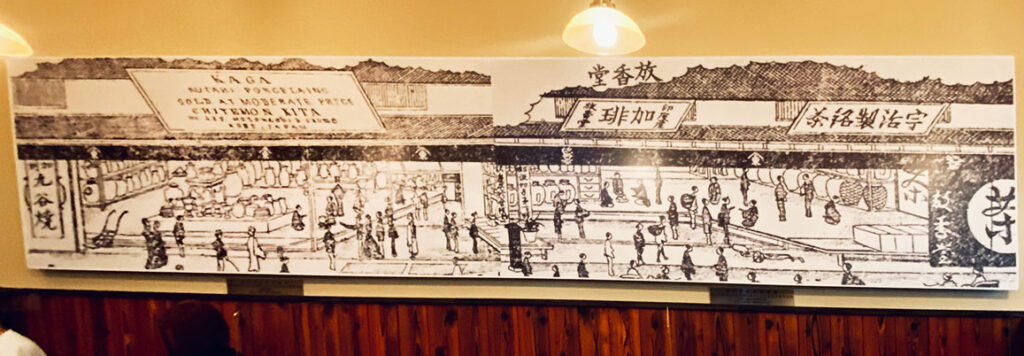
Hokodo Kako (Kako is another way to say coffee in old style Japanese) is split into their shop section where you can buy bags of tea and coffee just like in the old days, and into a cafe where you can sit down and enjoy some coffee and refreshments. The cafe is a bit tight, as there are many tables stuffed in to accommodate as many people as possible; the dark interior reinforced this cozy feeling. The wall features a painting of what the shop looked like before the modernization.
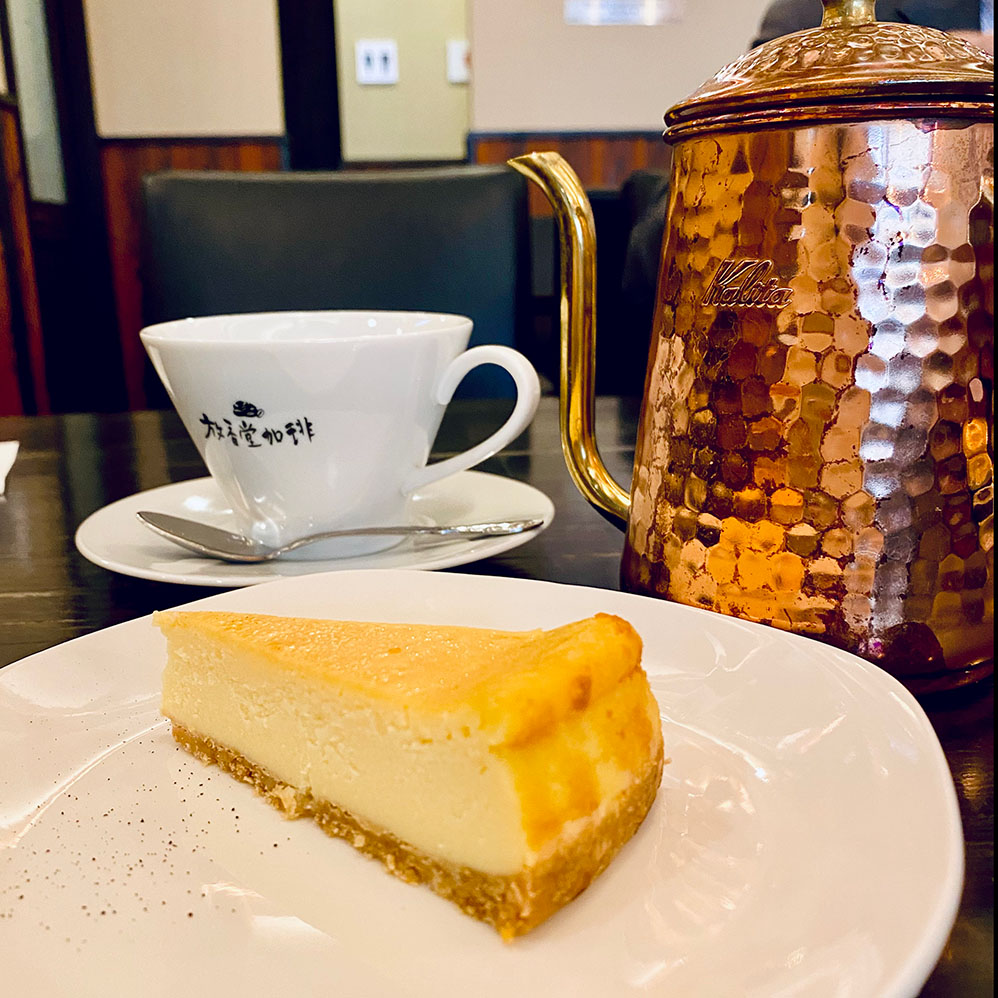
Rintaro is their signature coffee; it’s an arabica bean from India. I thoroughly enjoyed this dark brew which was prepared in a French Press. Cocoa and caramel notes in the coffee were subtle, but the smoothness and rich mouthfeel were very pronounced. The coffee paired well with their cheesecake – with the slight bitterness of the coffee breaking through and refreshing your palette, while the woody notes brought out some character from the otherwise generic cheesecake. If you enjoy your coffee with sugar and milk, the robust flavor of this coffee can definitely handle it. If you’re in the area, try out the coffee; the cheesecake is definitely optional as it is very forgettable.

Hokodo also sells Uji Green Tea at the front of the shop. It’s thickened and sweetened to the point that it’s more of a dessert you enjoy with a spoon, than something you drink. It’s not something I’ve found anywhere else, so if you like sweets or green tea, it’s worth trying.
If you’re in Kobe and like coffee, Hokodo Kako deserves a visit for its place in history as Japan’s first coffee shop. You can learn more about Hokodo Kako on their website. Please follow me on Instagram (@CoffeeRyokou) if you want to experience my coffee trips around Japan with me.

